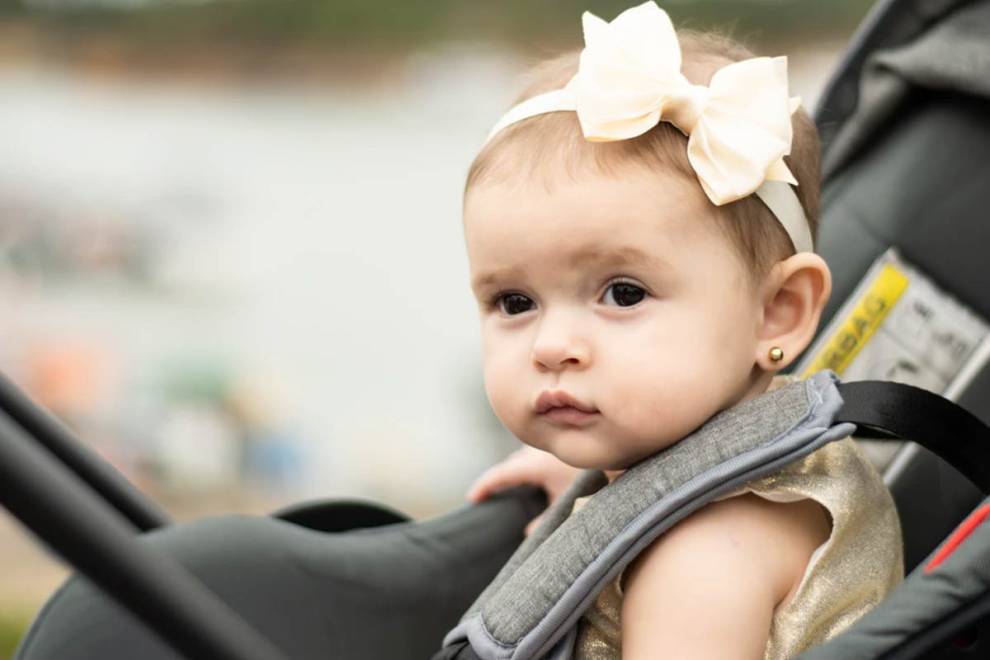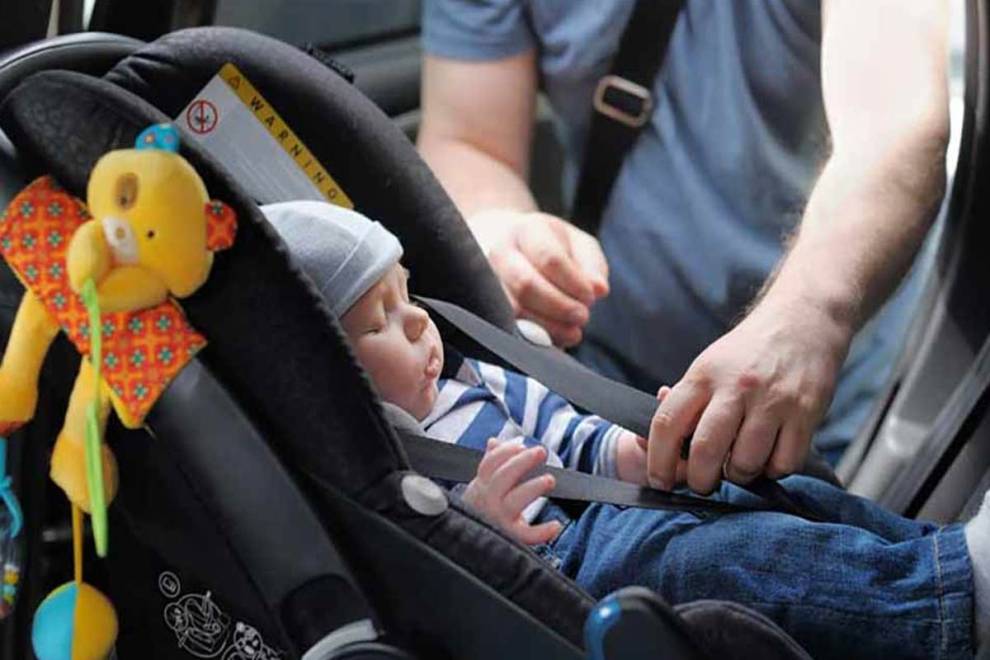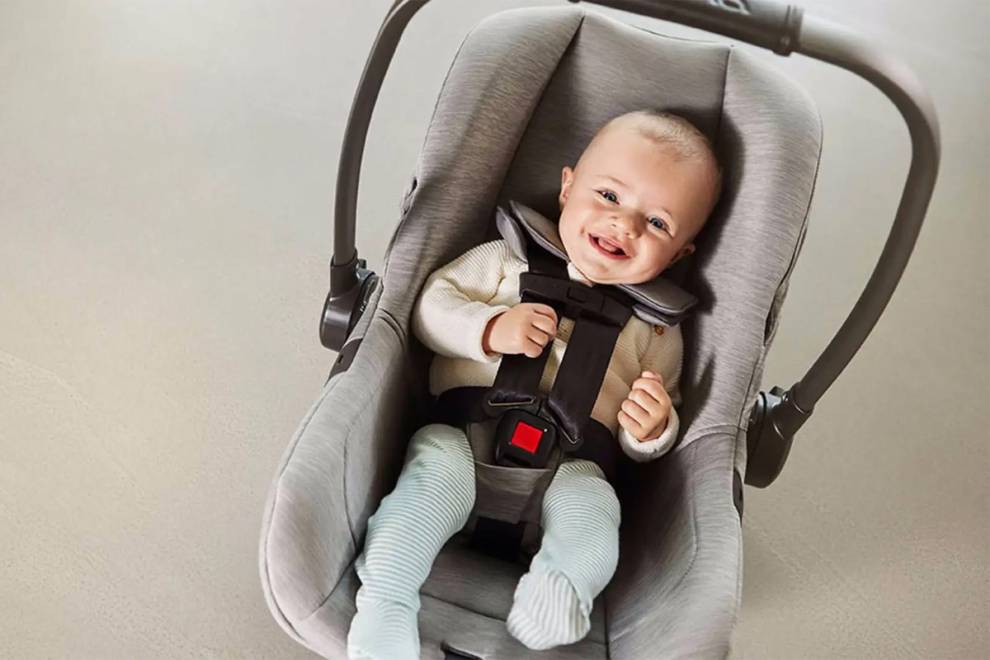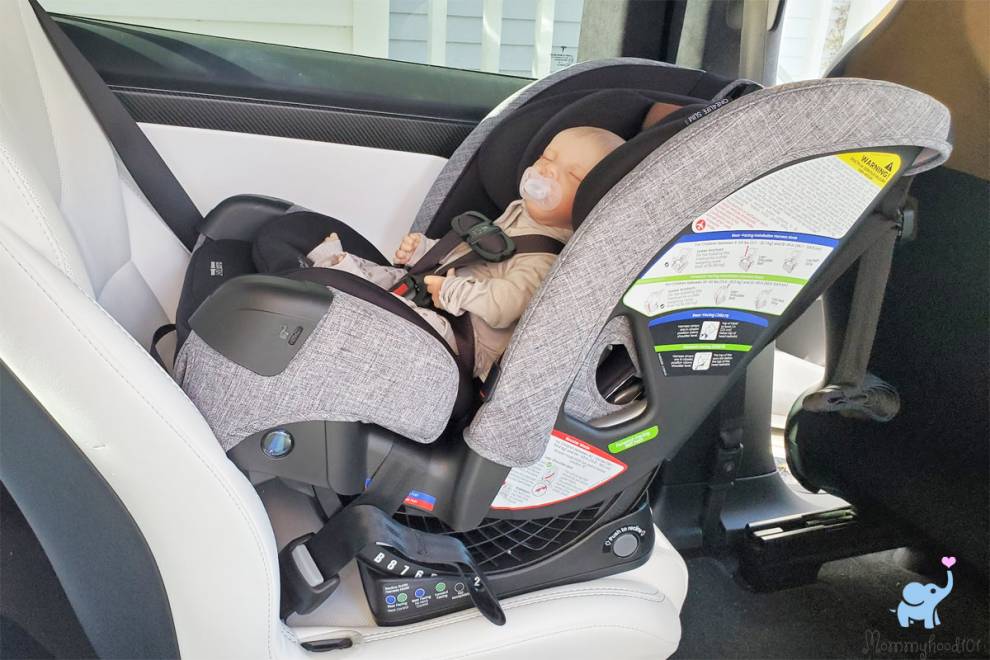When trying to spot autism early, here's what therapists are looking for.
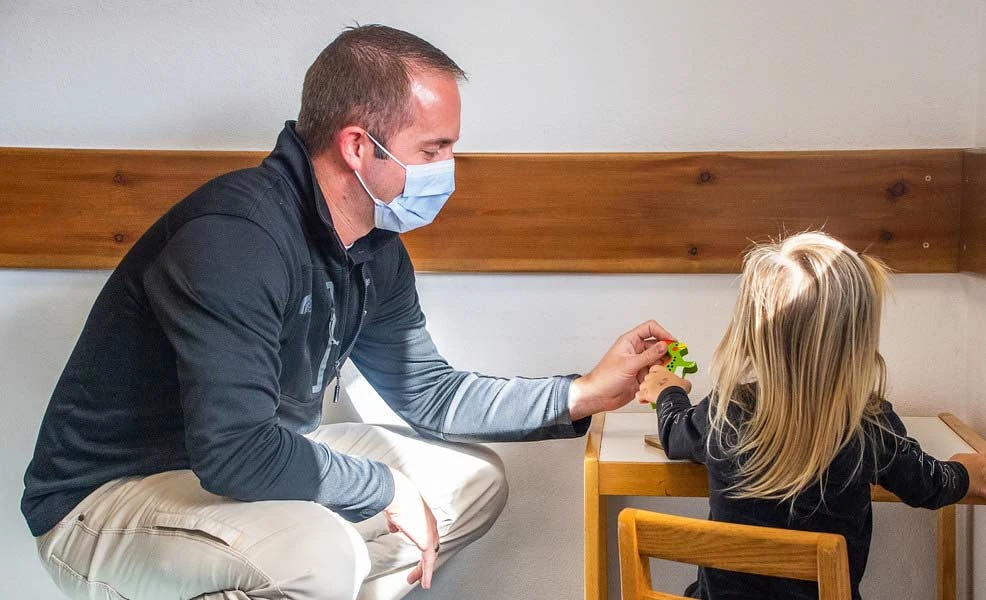
Mommyhood101 independently tests and curates baby gear to help you make informed decisions. If you buy products through links on our site, we may earn a commission.
Reviewed by Danielle Feerst, OTR/L
When a child receives an autism spectrum disorder (ASD) diagnosis, there may be an adjustment process for some parents as they learn to be the best parent for their child while also navigating therapies, insurance claims, and a new vocabulary.
Some parents may find it helpful to read Emily Perl Kingsley's article, Welcome to Holland, in which the learning adjustment is likened to that of landing in a new vacation destination after planning a big trip to Italy: the necessity to learn a new language, buy new guidebooks, meet new people, and adapt to different customs. This journey may look different for all parents but at the end of the day it is important to remember that your child, like all children, just needs your love and support.
Autism and Developmental Milestones
For parents of a child with autism, there will be new special moments in growth and development that are unique to your child and unique to autism. These might separate your son or daughter from the neurotypical child development pathway; some developmental milestones might arrive earlier than others, and some milestones might be delayed.
Want to check your child's growth relative to WHO and CDC standards? Use our popular growth chart calculator to calculate percentiles and predictions for height, weight, and head circumference!
In this article, we provide an in-depth overview of common signs and symptoms of autism in infants and toddlers, as well as observable impacts on milestones from the experience of an occupational therapist.
Birth to 2 Years: Early Signs and Early Intervention
According to the Interdisciplinary Counsel on Development and Learning (ICDL), several myths persist in our culture regarding autism. One of the biggest myths is that children with autism cannot form loving, deep, close bonds or relationships with others. All children want to be loved and cared for; children with autism can engage in deeply meaningful relationships with other people.
Birth to 2 Months: Self-Regulation
During infancy and the early first two months of birth, babies are forming self-regulation skills, developing deep neural connections and regulating arousal through the central nervous system. Self-regulation is the ability to regulate one’s arousal state in response to environmental stress, and adaptively cope with stress. For children with autism, this is one developmental area that can be slower to develop.
Moro Reflex
One reflex pattern that will be present in utero until 4 to 6 months is called the Moro Embrace Reflex, or “Startle Response”, which is a baby’s way of protecting itself from danger. Upon a loud noise or startle (e.g. the feeling of being dropped) the baby’s arms and legs will splay outward in a starfish like pose. This is a central nervous system reflex response to fear. In adults, the reflex is responsible for positioning of the arms and legs to brace from a loss of balance (Masgutova, 2015).
In children with autism, fight and flight receptors and this reflex pattern, might be unintegrated for a longer period of time, even into adolescence or adulthood. There could be an over-reaction to noise and visual stimulation that triggers fight or flight responses in the child. In other cases, there may be an under-reaction to stimulation. This can make it particularly challenging for some children to adaptively accommodate different demands and stressors, meaning that you might see under-responsiveness or over-responsiveness relative to similarly-aged peers.
Sensory Integration Therapy
Participating in reflex integration or sensory integration therapy in early childhood can help children develop self-regulation skills, one of the earliest milestones in social emotional learning.
Sensory Integration Therapy, developed by A. Jean Ayres, PhD, OTR/L, was formally known as Ayres Sensory Integration (ASI). It is a model of treatment for clients who have difficulty processing sensory information.
Sensory integration is the process through which humans register, modulate, and discriminate input from the environment (sounds, sights, tastes, balance and movement, joint position in space, and smells). Sensory Integration therapy is individualized to meet the child’s sensory preferences: hypo or hyper responsiveness to environmental sensory stimuli determines the treatment plan. Sensory Integration Therapy is one of the few therapies specifically designed for application during the first couple years of life, though it might not be effective for all children. If you are interested in enriching your child's sensory experience, check out our list of the best sensory toys, separated by age group.
Decreased Eye Contact in Infancy
Parents of babies subsequently diagnosed with an autism spectrum disorder often report that their baby's eye contact is not what they expected, or not like other similarly-aged peers. This leads many parents to ask whether decreased eye contact might mean their child has autism.
All babies are forming intimacy and attachment bonds with the primary caregiver or mother from birth onward. It was previously assumed that children with autism actively avoid eye contact due to a fear or stress response to the social cues available in the eyes.
However, according to research from Emory University’s Marcus Autism Center, Dr. Amy Klin says that children with autism do not actively avoid eye contact like previously thought. Recent research suggests that children with autism simply do not receive social cues from eyes to the same extent as neurotypical children (2016). In other words, for children with autism, making eye contact might not prove as informative to them as it would for a neurotypical child.
Always talk to your pediatrician and local Early Intervention Services about concerns that emerge as early as 6 months, but note that most clinicians do not diagnose ASD before the age of 18 months.
How Can I Help My Baby Regulate?
Rocking your baby, using one of our best baby swings, singing, and holding your baby to your chest is a way to help the child develop the ability to calm and self-soothe through touch and physical intimacy, regulating to your heartrate. A self-regulated child is able to cope with environmental stress and relate well with others (Porges, 2019).
A parent who accurately responds to a child’s cries helps develop the baby’s two-way communication and self-regulation abilities. Even in a typically developing child there can be a mismatch in communication style. Adaptively accommodating your child's needs is very important for establishing trust, intimacy, implicit communication, and self-regulation.
With early intervention, therapy, and loving and responsive caregivers, most children will make developmental progress in social emotional learning, self-regulation, intimacy, and two-way communication. Early Intervention (EI), for children under 2 years old, is a term used to describe the services available to children and families with a developmental disability, which may include speech, occupational, and physical therapy.
Since this is a publicly funded program, children who are eligible can receive free or reduced cost services (CDC, 2019). Check out your state’s EI guidelines for more specifics.
4 to 6 Months Old: Engaging and Relating
As a baby with a social emotional learning challenges grows to be 4 to 6 months old, the child might not be drawn to familiar faces or recognize strangers, exhibiting delays in engaging and relating with others. The baby may not make eye contact as frequently because the baby is not receiving the same social cues from eye contact.
There might be little to no noises or sounds, such as a lack of cooing or gurgling. This is an alert to parents and should be addressed with a developmental pediatrician. At 6 months, typically developing children will look at themselves in a mirror, recognize faces or recognize if someone is a stranger and respond negatively. Children at this age will also enjoy peek-a-boo and cause and effect games, as described in our List of Developmental Milestones.
A baby who might be later diagnosed with autism could exhibit less frequent eye contact with their own image in a mirror or with caregivers, difficulty tolerating physical touch, decreased tolerance for having a diaper changed, and decreased interest in games like peek-a-boo. These can all be early signs of autism or sensory processing challenges. There might be a lack of engagement between caregivers and the baby: the baby might not appear to be happy or responsive to familiar people.
7 to 10 Months Old: Purposeful Two-Way Communication
Babies between the age of 6 and 12 months are entering a new phase of social emotional learning, purposeful two-way communication. At 9 months, a typically developing baby will start to copy sounds and gestures or use a finger to point to objects, which is part of the two-way communication process. If you are noticing that your child is not imitating sounds or gestures, like a wave or a smile, this could be a sign that there is a delay in this milestone, which is the foundational step for the next stage of complex communication and problem solving.
Most 9 and 10-month-old babies will be engaging in play behaviors like dumping objects out of containers, throwing toys and stacking, searching for toys of interest that are hidden, and pulling to stand on furniture or small tabletops for toddlers. Closer to the age of 12 months, he or she will understand the word, “no” and might start to show signs of frustration or defiance upon hearing that word!
12 to 24 Months Old: Complex Communication and Problem Solving
Between 12 – 24 months your child will start to evolve from purposeful two-way communication into complex communication and shared problem-solving patterns (ICDL, 2019). This does not necessarily mean verbal communication, since oftentimes, children without developmental challenges do not talk until the age of two. Sometimes language delays resolve naturally, but a speech language therapist can best facilitate this discussion.
There are patterns of interaction between caregiver and child that emerge as well. This includes games that allow for shared problem-solving, like opening and closing container lids, searching for hidden toys, pulling a toy on a string, stacking blocks, putting big puzzle pieces into holds, shape sorting with big blocks, etc. If these types of play behaviors and interactions are not present, and your child does not appear to be developing verbal language, you should speak with your pediatrician.
Around 15 months, typically developing children will cry when a caregiver leaves or if denied a favorite toy. A neurotypical child might pick up a book of preference or point to objects of interest, play peek-a-boo, repeat sounds or words, and even assist you in putting on/taking off clothing by lifting a leg or arm into the clothing article with assist. There should be a level of awareness that you are the primary caregiver. If this is not something you are noticing by the age of 24 months, talk to your pediatrician. Complex communication and shared problem solving, which persist into early childhood, form the foundation for logical connections and higher-level thinking.
Social emotional learning milestones can have gaps – for instance a child might have purposeful two-way communication, but no ability to self-regulate or demonstrate interest in the world or other people (see above). D.I.R. Floortime therapy works to bridge gaps in developmental milestones.
Physically, your baby should be able to sit independently, pull to stand, stand alone, or even walk by 15 months. Look out for missing simple gestures of communication skills, such as no wave or no shaking/nodding of the head, no pointing, no smiling, no clapping. At 12 to 15 months, your child should use a spoon independently in addition to finger feeding and will demonstrate interest in a variety of foods introduced. Look out for picky eating preferences or difficulty at mealtimes, as often children with autism show aversions to certain textures or foods or prefer only one or two of the same food choices.
After Early Intervention: Toddlers with Autism
After age 2 years old, children phase out of Early Intervention services and may be offered preschool services through distric-based programs. Under age 3 years old, children who received EI were covered through Part C of the Individuals with Disabilities Education Act (IDEA). According to The Center for Autism at the Children’s Hospital of Philadelphia, after age 3, children have to qualify for services through school or outpatient therapy centers, under part B of IDEA; in some states, the same agency does not provide part B and C services.
24 to 48 Months: Symbols and Emotional Ideas
Between 2 and 3 years old, a typically developing child will be happy by the presence of other children, particularly older children and demonstrate mirroring behaviors and sounds of siblings or others (CDC, 2019). Your child also might be interested in self-feeding with a spoon and fork, drawing and writing, exploring new objects in the environment, running, climbing, and walking well, particularly by the age of 3 years old.
However, a child with ASD at this age sometimes demonstrates delays in all the areas listed above, including play skills. A lack of parallel play or pretend play, and lack of symbolic play are often noted in outpatient therapy in children with ASD.
For instance, objects like spoons are not used for feeding dolls in play pretend, because this symbolic use for the tool may not have developed yet. There could be a decrease in capacity for connecting emotional ideas to play behaviors.
Oftentimes, delays in activities of daily living like toileting and dressing skills become obvious as well. Some children with autism are not able to potty train due to lack of body awareness – a lack of awareness for being wet or soiled, the first step to independent toileting - is sometimes delayed in children with developmental disabilities and autism.
Remember, at this age, children should have awareness for one or more body parts and should be pointing to their eyes, nose, and mouth or to other human representations in picture books. This is something that is frequently worked on in Occupational Therapy with children on the autism spectrum, along with body awareness and motor planning (sequencing action steps and forming a plan for movement of the body in space).
Ages 3 to 4.5 Years: Logic and Ideas
During the prior stages of social emotional development, mentioned above, a child moves between play activities without connection – one minute the child plays with dolls and a tea set then moves to stack blocks or crash trains on a track the next minute. However, at the age of 3 to 4.5 years old, logical bridges in ideation and play start to form in neurotypically developing children.
For example, the cars are going to a place on the track, or the dolls set up a tea party and someone arrives, or the child reaches for blocks to build a castle needed for the dolls at the party. More emotions start coming out in the play and little dramas between good and bad characters may emerge (IDCL, 2019).
Children with autism may have difficulty making these emotional connections and forming bridges between play activities. Oftentimes, this will look like a child perseverating on one play task or activity (e.g. A child plays with magnet tiles – picking up and stacking, on repeat, without a purposeful structure. He or she is not forming a higher-level concept with the tiles but is certaintly mesmerized by the feeling of the magnets coming together.)
This and a delay of flexibility in play are apparent and frequent in children with autism. If interrupted, a tantrum might ensue. This is quite commonly seen in children with autism as well: rigidity and repetition in play behaviors, without a higher purpose or emotional connection to play.
Play-based therapy and Floortime can significantly help integrate these social emotional learning milestones, elevating your child to the next developmental level. There are other types of therapies as well, including Applied Behavioral Analysis, Sensory Integration Therapy, Behavioral Therapy, Music Therapy, and other alternative therapeutic paths for your child. Each child has different needs, including typically developing children, and one technique might be more or less appropriate for your child. We always recommend seeking second opinions from therapists and physicians, to ensure you're finding the right approach for your child and your personal preferences.
Conclusions
Identifying milestones that are reliably affected by an autism spectrum disorder is challenging, for a few reasons. First, every child is different and may show delays in one area but not in another, or it might be challenging to describe or quantify a delay you see as a caregiver, but might not be seen in a brief session with a therapist or pediatrician. Second, some delays are directly observable by parents and experts, but others are more subtle and might be hard to perceive; in these cases, you will likely need an expert with extended experience to notice subtle relatively subtle cues. Third, because the autism spectrum is just that - a spectrum - and this spectrum extends into neurotypical children, any delays you notice might not necessarily be associated with a formal diagnosis. In these cases, it might be particularly challenging to pursue therapies for children, get therapies covered by insurance, or incorporate therapies into public schooling.
Because you spend the most time with your child, you are likely to notice some things that give you cause for concern. If this is the case, always voice these concerns to your pediatrician. If your pediatrician is dismissive of your concerns, we suggest seeking a second opinion, perhaps from a developmental pediatrician who is likely more trained and experienced in this domain.
References
Educational Institute for Neuro-Sensory Motor and Reflex Integration (SMEI)
IDEA: Individuals with Disabilities Education Act
CDC: What is Early Intervention?







